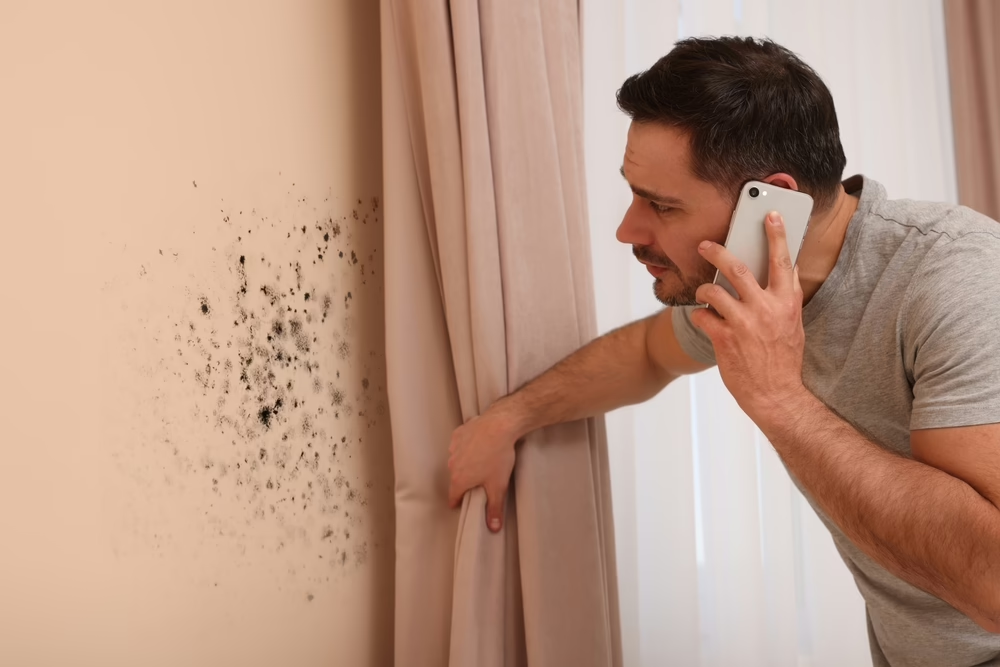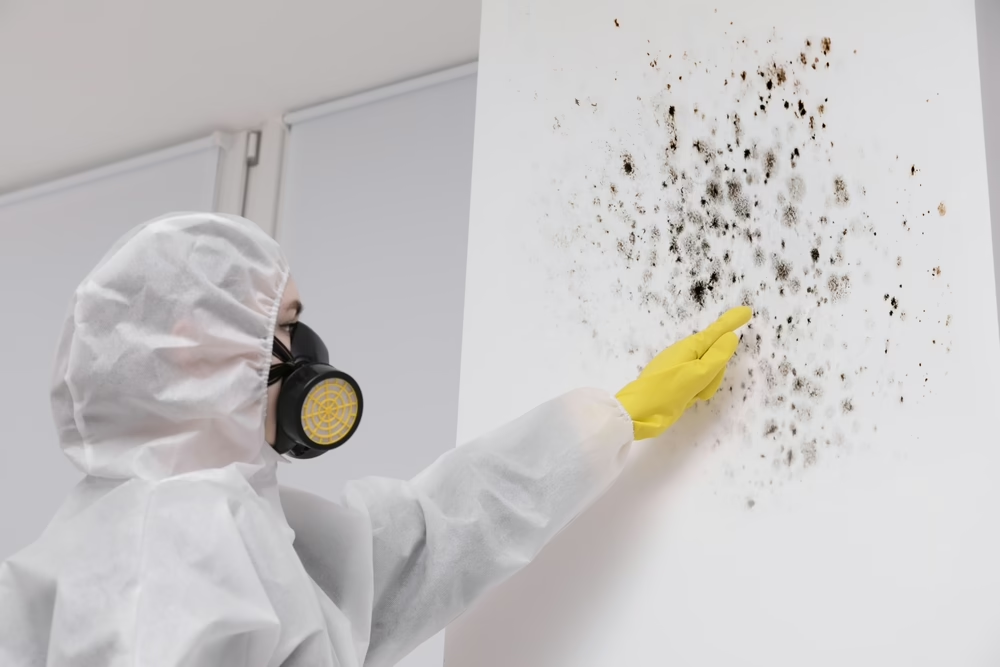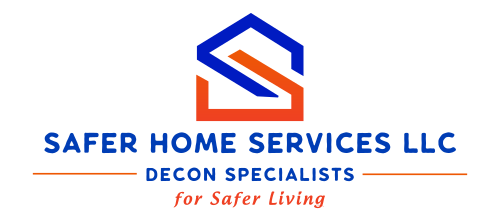
Black mold, or Stachybotrys chartarum, has earned a notorious reputation for producing health issues and property loss. With its dark appearance and link to severe sickness, it is a property owner’s concern across the world. But exactly how dangerous is black mold? How is it diagnosed, removed, and prevented? This definitive guide separates fact from fiction and provides step-by-step guidance on how to eliminate black mold effectively. Professional mold remediation in South Jersey and removal services enable you to protect your family and home.
What is Black Mold?
Black mold is a fungus that thrives in warm, moist, and inadequately ventilated conditions. It typically presents as dark greenish-black stains with a powdery or slimy surface. It also tends to proliferate on cellulose-rich materials such as wood, drywall, insulation, and cardboard. Black mold can grow in areas with long-term water damage, such as basements, bathrooms, or places prone to flooding or leaks. For Black mold to grow, there are three specific conditions that need to exist: heat, moisture, and food. Black mold proliferates in homes with condensation issues, leaks, broken pipes, or high humidity. Unlike some other molds, Stachybotrys grows where it cannot be seen—behind a wall or under the carpeting—and becomes harder to locate until it has permeated throughout.
Myths and Facts About Black Mold

Black mold is surrounded by numerous myths, which create unwarranted hysteria or inappropriate treatments. One of the myths is that black mold is always toxic. The reality is that black mold does not always create mycotoxins. Mycotoxins are toxic compounds that are naturally produced by certain types of molds. Mycotoxin production is dependent on the environment where the mold is growing and other factors, so all black mold is not necessarily toxic. Another myth is that only black mold is toxic. In fact, many molds like Penicillium, Aspergillus, and Cladosporium are also capable of producing severe health problems. People usually believe that bleach will completely kill black mold. Even though bleach is able to strip away mold stains from non-porous surfaces, it is not adequately able to penetrate porous surfaces like drywall. Spores left behind may regrow if the moisture issue isn’t addressed. Finally, some think that black mold only exists in older houses, but any building, new or old, can have black mold if there is poor ventilation and moisture.
Health Risks of Black Mold Exposure
Black mold exposure can lead to a variety of medical problems, especially in those who already have illnesses. General signs and symptoms include coughing, sneezing, wheezing, and shortness of breath. Most will also experience allergic reactions such as itchy eyes, runny nose, and skin irritation. Long-term exposure can lead to severe issues such as chronic fatigue, brain fogginess, or sinusitis.
Certain groups of people are particularly vulnerable to mold exposure, including infants, toddlers, the elderly, and individuals with respiratory conditions like asthma or compromised immune systems. For these individuals, black mold will exacerbate existing health conditions and cause serious complications. It is important to recognize the symptoms and take immediate action to remove mold in order to minimize health risks.
How to Identify Black Mold in Your Home

Black mold is difficult to identify as it has a tendency to flourish in hidden places. However, there are some tell-tale indications. Black mold presents itself in the shape of dark green or black blotches that have a tendency to creep on walls, ceilings, or corners. Black mold generally appears in water-damaged spots, i.e., basements, bathrooms, and at the back of kitchen cabinets. Black mold also emits a specific, unpleasant smell that will inform you of its presence even if you cannot locate it.
If you’re unsure of mold presence but can’t find it, hiring a professional mold inspection company can provide you with a true determination. Specialized equipment is used by trained professionals to determine the presence of mold and measure its scope, including inaccessible areas. Tackling mold at an early stage saves you from greater damage and costly remediation. We are able to provide mold testing in South Jersey to help make sure your home is safe.
How to Remove Black Mold Safely

If you discover black mold in your home, safety is the priority. Wear protective gear such as an N-95 mask, gloves, and safety goggles before attempting any mold removal to minimize exposure to mold spores. Make sure there is good ventilation in the area by opening windows and using fans to circulate air.
In small areas, black mold can be remediated naturally. White vinegar, for example, can be directly applied to the surface and left on for an hour before being scrubbed off. Hydrogen peroxide (3%) is also effective in killing black mold on non-porous surfaces. On porous surfaces like drywall, however, mold may have penetrated far into the material, which can require more invasive remediation.
Should the mold growth be more than 10 square feet, it is wise to bring the experts in. Professional mold remediation services, such as Safer Home Services LLC, use industrial-strength antimicrobial disinfectants to ensure that all mold spores have been eliminated. Professional handling ensures safe mold removal and also future prevention of regrowth.
Preventing Black Mold Growth
Prevention is the best way to ensure that black mold issues do not arise in your house. The most important aspect is to control humidity—maintain indoor humidity levels at 30–50% through the use of dehumidifiers, particularly in bathrooms and basements. Repair water leaks immediately, whether from plumbing, roofs, or windows, as standing water provides a haven for mold development.
Proper ventilation is also essential. Ensure your kitchens, baths, and laundry areas are equipped with exhaust fans to reduce moisture buildup. Opening windows occasionally allows fresh air in and discourages condensation. Regularly inspecting high-risk areas, such as crawl spaces, attics, and basements, catches moisture problems in the early stages. Installing a vapor barrier in Mount Laurel homes is also a smart preventive step, especially in crawl spaces where ground moisture can contribute to high indoor humidity and potential mold growth. Professional mold inspection on occasion can also be beneficial, particularly if your home has had a history of water damage or dampness.
Call in the Experts
If your house is infested with black mold, do not let it go untreated. Professional removal and remediation services are the most effective solution to ensure your house is mold-free. Safer Home Services LLC is certified in mold inspection and mold remediation and uses industrial-strength antimicrobial products to kill and remove mold. Our professionals can identify mold problems, safely remove materials damaged by mold, and take preventative measures to keep mold from returning. To enjoy peace of mind and a healthier living space, contact Safer Home Services LLC today at 856-271-5313. Don’t let black mold grow into an even bigger issue—act now to safeguard your home and family.
Conclusion
Black mold is a big problem, but being aware of the facts and taking preventive actions can make a difference. Though myths about black mold are sufficient to raise undue hysteria, its risks should not be ignored. From detecting black mold to its safe removal and prevention from recurrences, expert help can help you save money, time, and potential health problems. If you suspect mold in your home, contact Safer Home Services LLC for expert mold inspection, removal, and remediation services. Mold doesn’t wait, and neither should you—let the experts restore your peace of mind!
